This
"Going deep" will be short and aimed to dispel a rather common
doubt.
Very often the collectors of this issue, even more if at the beginning, find
stamps having double effigies and think to have something rare. It' is not
that way, al least in most of the cases. As said several times, (see the
Introduction to the issue and the other "Going deep") two methods
have been used to emboss the effigies: as matrix of 50 and as just a couple
of them. Because they were not precise it 's non so rare that, due to a small
shift of the paper, the effigy was embossed twice; the same result was possible
due to an unwanted double hit of the tool.
This variety, even if interesting and enjoyable to watch, is very frequent
in these stamps and can be found in all the values and specially when embossed
with the second approach.
It is more interesting and less common when found in the first runs of these
stamps or when the double printing is clearly one apart from the other (in
this case the second embossing was made to correct the first one "not
in target"). Even more interesting are the triple embossing or, even
more, (very rare case) two effigies one upside down versus the other.
Here are several pieces (Fig. 1 to 9) that show the double embossing
close to each other: even if they are very nice to collect and to watch they
do not represent "treasures" like somebody thinks...
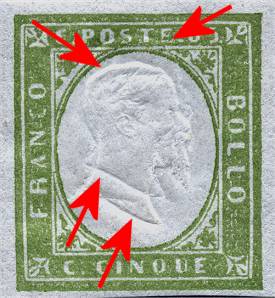 |
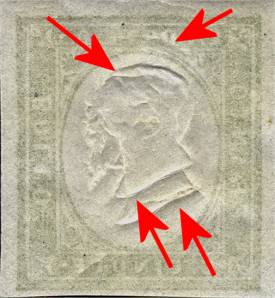 |
|
Fig. 1-1a: how a typical double embossing appears both on front and on back |
|
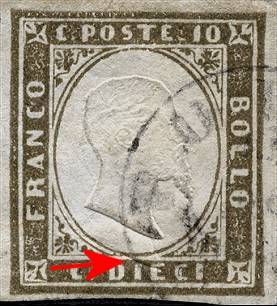 |
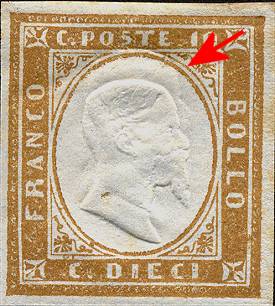 |
|
Fig.
2-3: two 10 centesimi with double embossing shifted down and
up
|
|
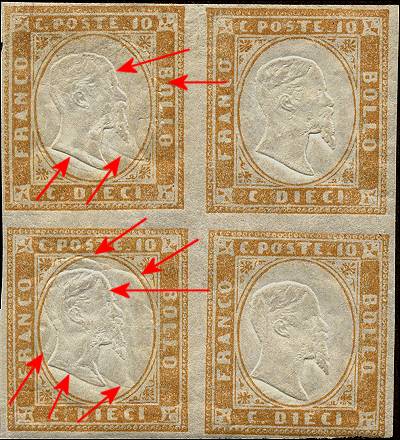
Fig. 4: block of four of 10 centesimi: the first with double embossing very apart
and the third one with a triple embossing
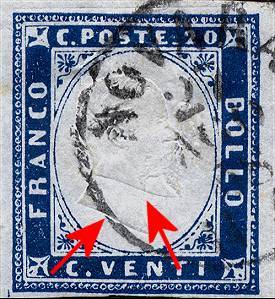
Fig. 5: 20 centesimi: the effigy is shifted up in a very significant way
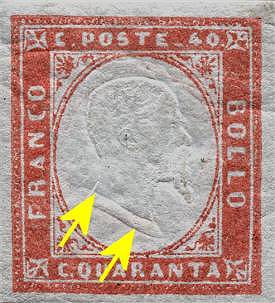 |
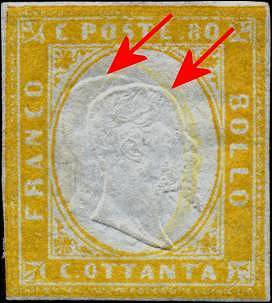 |
|
Fig.
6-7: 40 centesimi with double embossing shifted to the top
and 80 centesimi
with the double embossing very much shifted to the left |
|
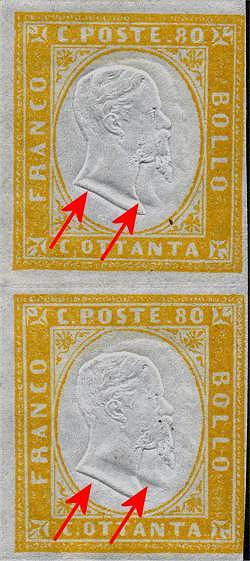
Fig. 8: two 80 centesimi in
vertical pair;
Both pieces have the double embossing, but shifted
in a different way (more apart in the bottom one)
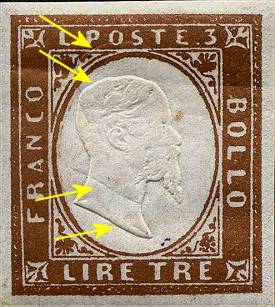
Fig. 9: 3
Lire with embossing shifted to the top